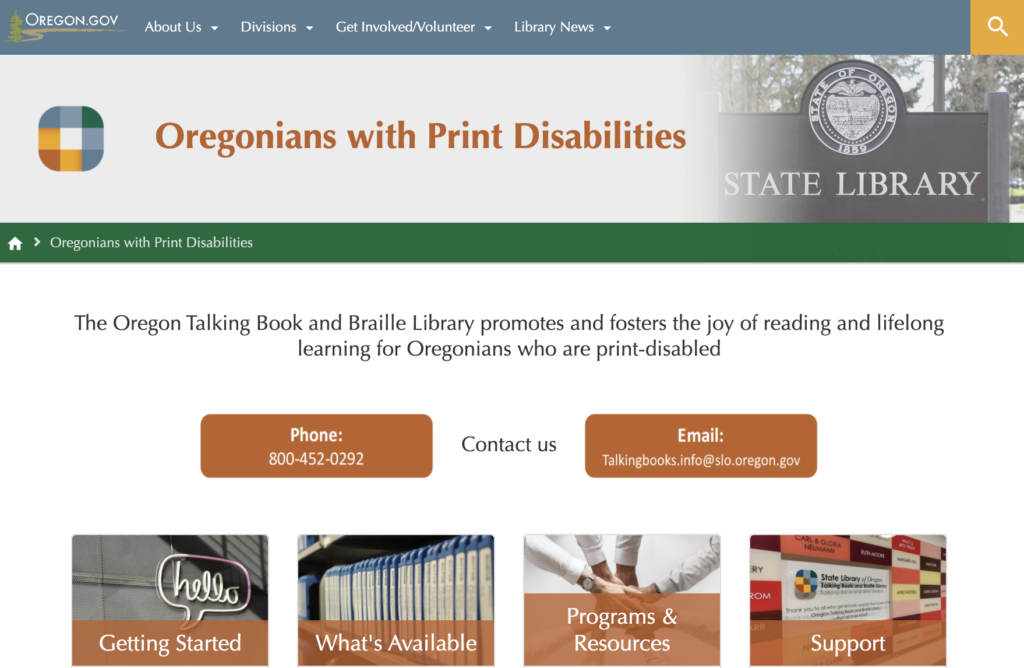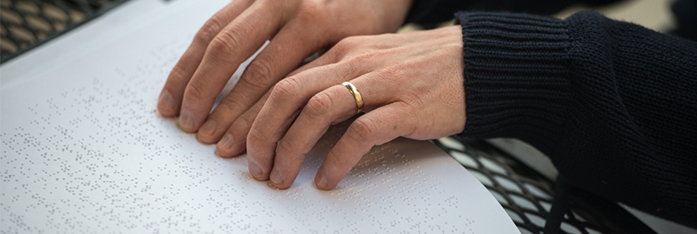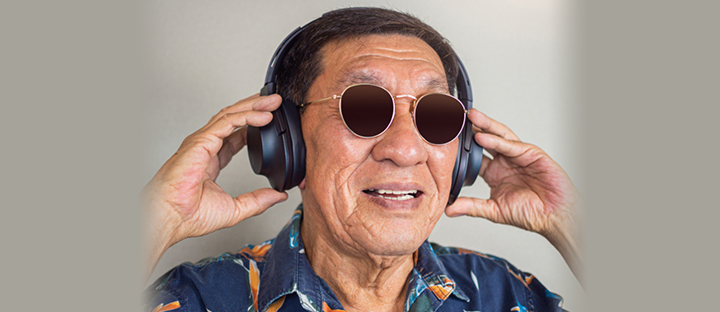If you live in Oregon and have a print disability that may include visual, physical, and reading difficulties, the Oregon Talking Book and Braille Library are available for you. Located in Salem, Oregon, they lend throughout all of Oregon. Lending is accessible through the mail or via download.
“Talking Books delivers a personalized connection to the world for people who are print-impaired.”
Joel Henderson, State Library
The service offers books you can listen to and read. There are also magazines available, just like those you would find in a public library, online, or from companies like Audible, Audiobooks, and eStories, which charge a premium.
The collection currently consists of over 90,000 audio titles. There are 19,000 titles written in braille, braille magazines, and over 350 descriptive videos.
Instructional materials include music and musical scores, which you can request directly from the National Library Service. Unfortunately, reference books, academic journals, textbooks, and music scores are not available.
When they say free, they mean it.
The service provides every readers with a free audiobook player. This device is required to play our specially formatted audiobooks. If anything happens to your free player, they’ll replace or repair it for free. Audiobooks are easy to send them back using prepaid mailing cards.
“Reading has always brought me pleasure,” said Kit Larson, a Redmond resident who just discovered the talking books last year through the Blind Commission. “Once I started listening to audiobooks, I rediscovered my love of reading and feel connected again.”
Books are mailed for free, and thankfully there are no late fees. You can download as many books and magazines as you want. It’s also free to and gain access to National Federation for the Blind (NFB) Newsline.
You can access Oregon Talking Book and Braille library collection anytime online or in-person from 9 a.m. to noon and from 1 to 4 p.m. Log onto www.ORtalkingbooks.org to learn more about the thousands of audiobook titles available.
Jill Grogan, a Bend-area resident who uses Talking Books due to a chronic illness, has been a patron since the ’90s. She said: “The technology has progressed. Now I get a digital player and free digital recordings to play. And there’s so much to enjoy. I can get almost anything I enjoy listening to; it’s fun.” She said that the Oregon Talking Book Library is a large part of her day, and she is thankful to receive the service.

History of the Oregon Talking Book and Braille Library
The first official library services for the blind began with the passage of the Pratt-Smoot Act of 1931. That’s when the Library of Congress agreed to provide books for blind adults. There are eighteen regional distribution libraries throughout Oregon.
In 1952, Congress expanded the library services to include resources for children. In 1966 the National Library Service for the Blind and Print Disabled welcomed all persons who could not read standard print because of visual or physical disability.
The Oregon Legislature in 1969 raised $80,000 to relocate the library to Salem from its original home in Portland. The Talking Book and Braille Library, led by librarian Mary Jane Shamp began operation with seven staff members.

Fast facts about the Talking Book and Braille Library
- In the late 1960s, the library circulation averaged 11,000 items per month to 1,700 users, including record discs, two-track cassette tapes, braille, and large print books.
- Today the circulation averages 31,000 items per month to 5,200 users and still operates with seven staff.
- In 1932 phonograph records were used, but as time progressed, the size and speed of these records evolved.
- Digital players and books first became available for patrons in 2009.
- In April 2009, the web-based Braille and Audio Reading Download system (BARD) from the National Library Service (NLS) was introduced. BARD gave registered users unlimited and immediate access to the entire NLS digital audio and electronic Braille collection
- BARD released the app for iOS devices in 2013, and the Android app came out in 2015


